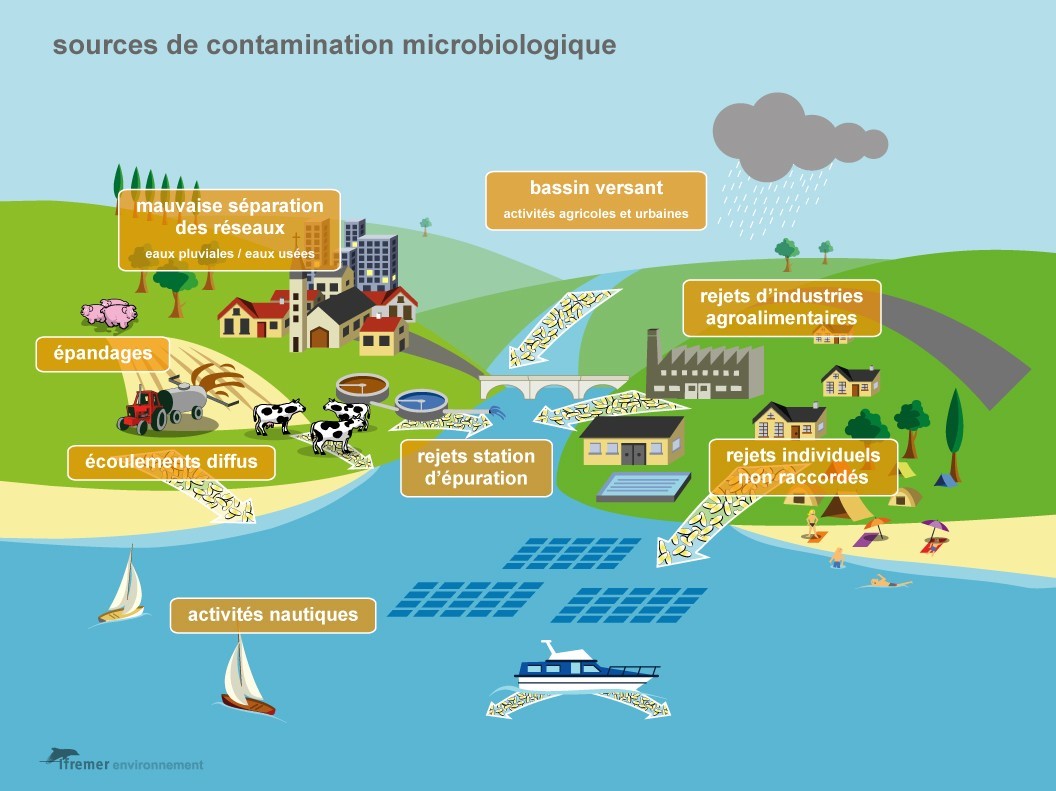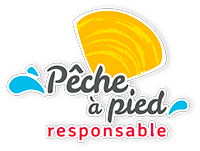Microbial germs may be present in water and shellfish. These include bacteria, viruses and parasites, some of which are pathogenic for humans.
Most pathogenic germs that can be identified in coastal waters come from faecal pollution of either human or animal origin. Some germs, however, live naturally in the marine environment (e.g. bacteria of the Vibrio genus).
Which microbial germs cause food poisoning ?
In shellfish, three categories of pathogenic germs can cause food poisoning in humans:
- Bacteria, principally consisting of the Salmonella and Vibrio genuses
- Viruses, particularly enteric viruses of human origin. Noroviruses are the main cause of severe gastroenteritis in humans and the leading cause of food poisoning connected with shellfish consumption. The Hepatitis A virus (HAV) is the second most common viral agent connected with shellfish food poisoning. These viruses can survive for several weeks in marine environments and are highly infectious
- Parasites, principally consisting of the Cryptosporidium and Giardia genuses. These parasites can be found in shellfish in the form of highly resistant encapsulated eggs which can remain viable and infectious for several months
The survival of germs in marine environments therefore varies according to their type; it is also influenced by other factors, such as the water temperature, salinity, sunlight, the water turbidity, and so on.
Where does contamination come from at shellfish gathering sites ?
Shellfish gathering sites are located on the foreshore, at the interface between land and sea, and are therefore exposed to various sources of contamination of terrestrial or maritime origin:

- Structural defects or temporary malfunctions in collective or individual sewerage systems carrying domestic wastewater or stormwater
- Agricultural non-point source pollution linked to manure spreading, or run-off from grazed land or areas with livestock buildings which is conveyed to the sea by rivers or enters the water system when grazed land is flooded
- Harbour activities and certain industrial activities
- Improper behaviour connected with recreational coastal activities (discharge of wastewater by leisure craft users, motor home users, etc.)
- Pollution from domestic animals (dogs, horses) or wild animals (marine birds).
A number of factors can also influence shellfish contamination:
- The season: in summer, human pressure on the coast and the risks of discharges into the marine environment are greater as a result of tourism
- Rainfall: rainfall results in run-off from soils and urban land; heavy rainfall can lead to the saturation or malfunction of sewerage infrastructure
- The characteristics of the watershed: relief, geology, size of the water system, land use, etc.
What are the symptoms of a microbial infection ?
Most microbial infections generally result in gastroenteritis of varying acuteness according to the germs involved (headaches, shivers, fever, diarrhoea, nausea, vomiting, etc.). Some infections can however take more serious forms (Hepatitis, for example).

